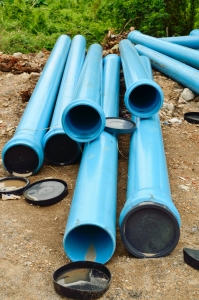It’s been a rough winter in Canada with frigid temperatures causing many water lines to freeze.
When water lines freeze, many homeowners think they can just fix the problem themselves, but as two Hamilton homeowners found out – it’s not that easy and you could potentially cause a lot of damage.
Just a few weeks ago, two homeowners set their houses on fire while trying to thaw frozen water pipes after the temperature dipped to minus 23 degrees Celsius. Thankfully no one was injured, but the blazes caused more than $160,000 in damages and left homeowners out in the cold seeking temporary shelter.
If you suspect you have frozen water pipes and have the Water Line Warranty or In-Home Plumbing and Drainage Protection with Service Line Warranties of Canada, contact our claims center immediately to file a claim.
If you do not have protection with Service Line Warranties of Canada and your situation doesn’t improve by allowing heat to access the pipes, contact a certified local plumber to perform a repair. Never, under any circumstances, use an open flame to attempt to thaw frozen pipes.
According to Dan Milovanovic, platoon chief for the City of Hamilton Fire Department in the Hamilton Spectator, using any sort of open flame to thaw frozen pipes is “incredibly risky” — but also not uncommon. “We see it from time to time … The message here is it’s not worth it,” he said.
Additionally, the use of space heaters isn’t advised to do the job. If you don’t want to hire a contractor, the Fire Department recommends attempting to use a hair dryer, small heater, hot water bottles or towels to slowly thaw the pipe, but this is also very risky. When the frozen water expands, you run the risk of cracking or breaking the pipe.
The best course of action is to prevent pipes from freezing by insulating walls or running a trickle of water through pipes during extremely cold weather.
If you currently do not have the Water Line Warranty or In-Home Plumbing and Drainage Protection, visit www.slwofc.ca to learn more.


